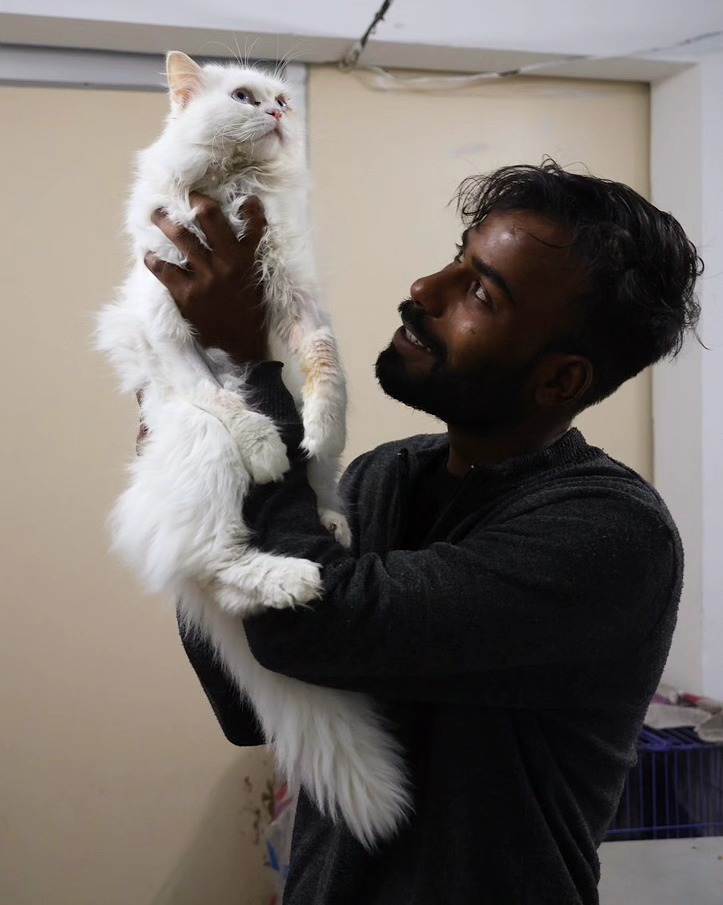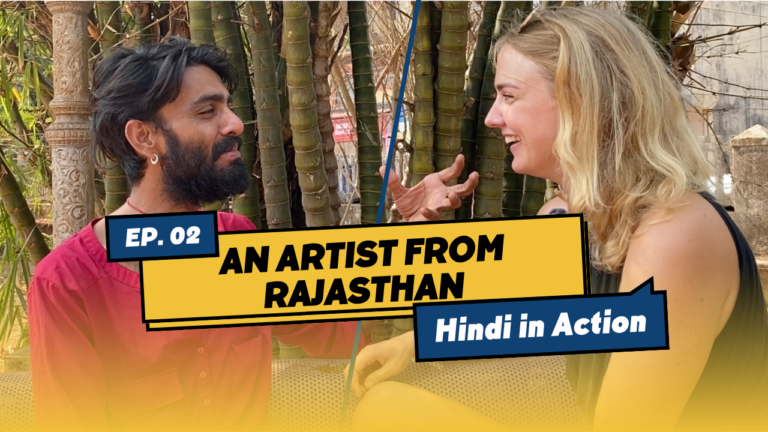When you visit India for the first time, one of the things that might surprise you most is the number of street animals in India freely roaming the cities. Cows, dogs, and monkeys are just as much a part of city life as people. You’ll see cows calmly lying in the middle of the road, and all the traffic just drives around them. Or monkeys visiting fruit shops like they’re regular customers, grabbing something to eat and watching the people go by.
But life on the streets isn’t easy for animals. With so many people and vehicles around, animals can get hurt. Sometimes they don’t survive. In the northern Indian city of Rishikesh, my path led me to an inspiring animal rescue in Rishikesh: a veterinary clinic started by a passionate and determined woman from France. I’ll share more about it later. As you walk through the streets here, you’re likely to come across animals in need of help. Whether they survive or not sometimes depends on a small action — will someone call the clinic? Will someone take a moment to try and save a life?
About the Clinic
Volunteering in India with animals showed me that small efforts really matter. The more people who know how to help, the more animals we can save.
I first joined the clinic to take photos of the animals and volunteers. Later, I started going on street rounds by helping animals directly in the field.
This veterinary clinic for stray animals has been operating for over 10 years. It began as the personal initiative of Inès, a young woman from France. She started simply with buying food, transporting animals to government clinics, involving friends, and collecting donations. Today, it’s a fully functioning center with five rooms, including an operating room, a quarantine area, and a space for paralyzed animals.
Each day, the team helps over 300 animals. Around 4 emergency cases come in daily without warning. Around 16 animals live at the clinic — mostly dogs, but also a cat and two monkeys. Some need long-term care, and others have no home to return to.

What Makes the Clinic Special
- A kind, caring approach combined with professional medical care
- Volunteers from all over the world
- Daily street work: feeding, treatment, emergency response
- Rehabilitation and adoption programs, including transfers to Europe
One of the most challenging times during my volunteering was an outbreak of a skin disease affecting many cows. Their bodies became covered in painful sores, they developed high fevers, and they urgently needed care, food, medicine, and attention. We were overwhelmed, doing everything we could to help as many as possible.
Evenings were the busiest. After the clinic closed, we packed big bags with medicine, bandages, and IV fluids, then drove to the riverbank where the cows stayed. Some cows were scared and would suddenly run even though they were sick and weighed over 400 kg! We had to stay calm, quick, and focused.
This experience brought up mixed emotions. I couldn’t help but feel that more could be done at the state level as better organisation, more support for animals that are considered sacred in India.

What the Clinic Does
1.
Sterilization
This is a key part of the clinic’s work. A qualified vet performs surgeries weekly and trains the team.
The process includes:
- Bonding with the animal well before surgery
- Full vaccination before sterilization
- Hospital care for three days post-surgery
- Regular follow-up care
Importantly, even after animals are released, the clinic checks on them. This long-term care is rare and very important.
2.
Vaccination
The goal is to protect as many animals and people as possible. Each day, the team vaccinates about 10 dogs against deadly diseases like:
- Rabies
- Distemper
- Parvovirus
3.
Education
Raising awareness is a vital part of the work. People are taught how to help, who to call, and why sterilization and vaccination matter. The clinic encourages compassion and responsibility in the community.
Volunteer Opportunities
There’s a role for everyone who wants to help:
- Taking care of animals (walking, feeding, dressing wounds)
- Supporting the street team
- Creating content for social media
- Helping with fundraising efforts
Even something as simple as sitting with a sick dog or cat is powerful. Love and attention help animals recover faster and the clinic staff is often too busy to offer this extra care themselves.
What the System Struggles With
Despite its impact, the clinic faces daily challenges:
- Limited funding - they always need donations and social media support
- A general lack of public involvement in animal rescue
- Occasionally aggressive or demanding visitors
- Bureaucratic obstacles and limited government support
For example, during the G20 summit, authorities attempted to “clean up” the streets by removing animals. Some were treated cruelly or transported in unsafe ways. The clinic’s team managed to rescue about 100 dogs, but many cows and bulls disappeared, either injured during relocation or sent to distant shelters that were never verified.
Conclusion
From what I’ve seen, the people of Rishikesh are generally kind and willing to help. It’s impossible to capture the full scope of this animal rescue in Rishikesh in just a few pages. But I can say this: the clinic brings people together. It inspires action and reminds us that even a small effort can mean a lot.
There’s something magical about this place. It fills you with love. Whether you feel moved, joyful, or sad when you visit, you leave with a full heart. Because sharing love and compassion not only heals others it also heals you.




